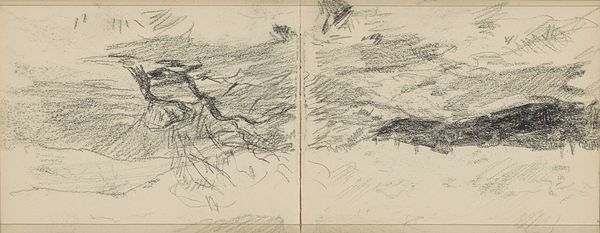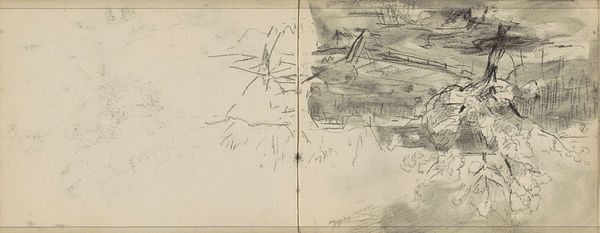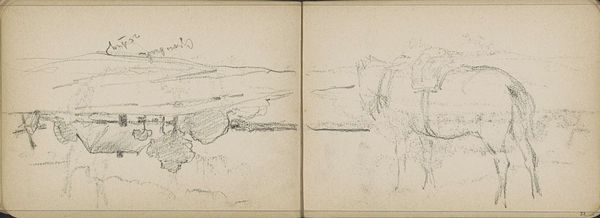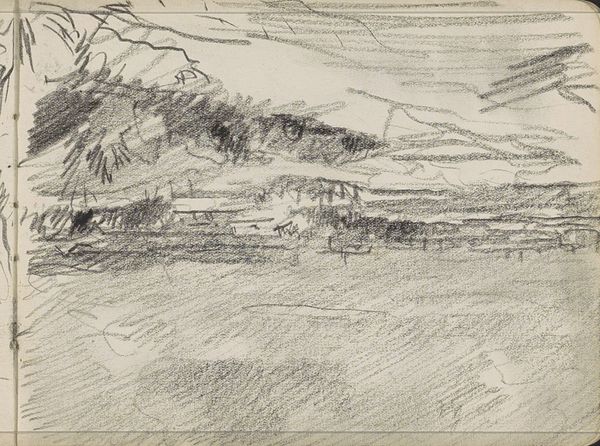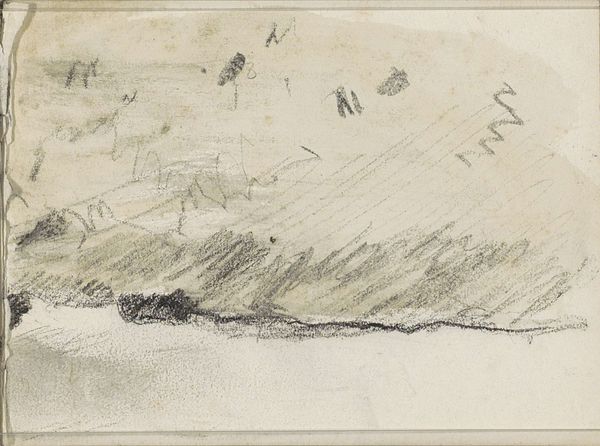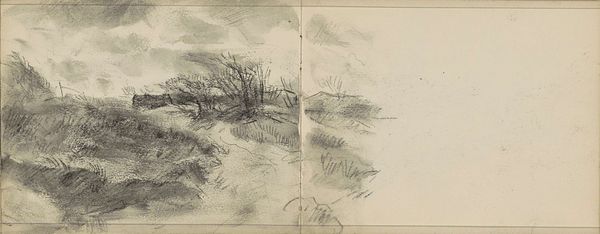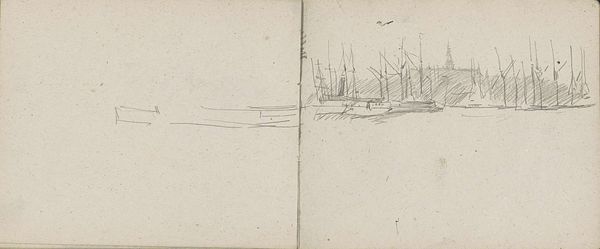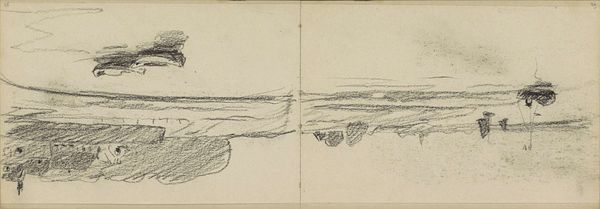
drawing, pencil, graphite
#
drawing
#
amateur sketch
#
light pencil work
#
pencil sketch
#
sketch book
#
incomplete sketchy
#
landscape
#
personal sketchbook
#
sketchwork
#
pencil
#
graphite
#
sketchbook drawing
#
sketchbook art
#
realism
#
initial sketch
Copyright: Rijks Museum: Open Domain
Curator: Here we have "Gebouw in een duinlandschap," or "Building in a Dune Landscape," a drawing created between 1881 and 1927. Johan Antonie de Jonge rendered it with graphite pencil on paper. Editor: Well, hello mood. It’s all very preliminary, isn't it? You can almost feel the artist chasing the light, trying to capture that very specific quality of light hitting the dunes. I mean, it's less about the building itself and more about…evanescence. Curator: Precisely! The sketchbook feel highlights its symbolic connection to transience, capturing the ever-shifting nature of sand and time. The Dutch landscape, with its history of reclaiming land, speaks to human ambition versus natural forces. Editor: It’s a study, for sure. I bet De Jonge kept going back to that view. Did the building ever truly emerge from the shadows? I love how unresolved it all feels, this visual echo of searching. Curator: It reminds me of the etymological roots of the word 'sketch' tracing back to ideas of quick, impulsive actions. These early impressions are a form of symbolic mapping—gestures of intent, not finished stories. Notice how the building's position in the dune hints at resilience. The dune itself a protector, a barrier. Editor: I get the dune's protective feel but, to be honest, that scribbled sky almost overshadows everything. It's as if the artist is trying to catch something beyond just form; something that has to be put down quickly before it disappears completely, a certain breath of wind or glint off a window...a feeling. Curator: Agreed. It becomes a metaphor for memory, impression, things half-grasped. A cultural narrative encoded in lines and shading. Editor: I leave here thinking about unfinished journeys and landscapes half-remembered. Curator: For me, it’s the tension between the sketched marks and the silent void beside it, prompting a question: what remains unsaid? What spaces wait for our own imagination?
Comments
No comments
Be the first to comment and join the conversation on the ultimate creative platform.

